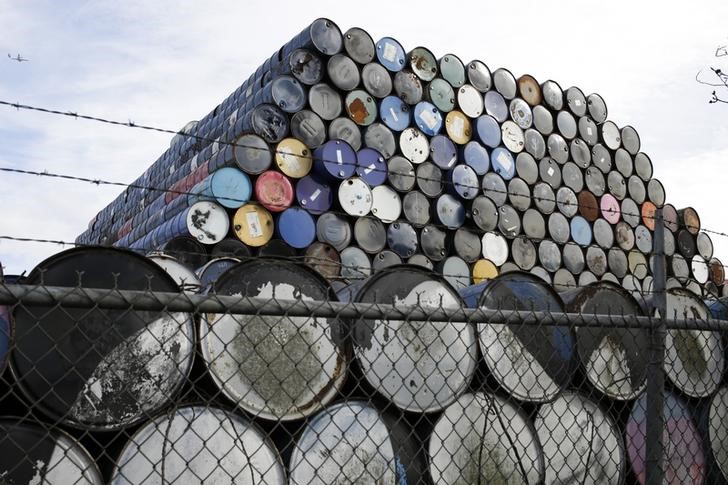* Brent, WTI are up by over 13 pct since early December
* But rising US oil production looms over tightening markets
* US oil output soars on surging shale: http://tmsnrt.rs/2DrO0Rm
By Henning Gloystein
SINGAPORE, Jan 17 (Reuters) - Oil prices rose on Wednesday on tightening supply and strong global demand, although some analysts warned of a downward correction after a more than 13-percent price rise in a month.
Prices have been driven up by production curbs in OPEC nations and Russia, as well as by healthy demand-growth.
Brent crude futures LCOc1 were at $69.35 at 0124 GMT, up 20 cents, or 0.3 percent, from their last close.
Brent on Monday hit $70.37 a barrel, its highest since December, 2014, which was at the beginning of a three-year oil price slump.
U.S. West Texas Intermediate (WTI) crude futures CLc1 were at $63.93 a barrel, up 20 cents, or 0.3 percent, from their last settlement. WTI hit a December-2014 peak of $64.89 a barrel on Tuesday.
In an effort to tighten markets and prop up prices, the Organization of the Petroleum Exporting Countries (OPEC) and Russia started to withhold production in January last year, and the cuts are set to last through 2018.
This restraint has coincided with healthy oil demand and economic growth, pushing up crude prices by more than 13 percent since early December.
"Oil remains underpinned by the solid economy with strong oil demand tightening global oil inventories. The past years' surplus supplies are slowly disappearing," said Norbert Ruecker, head of commodity research at Swiss bank Julius Baer.
U.S. crude stocks fell by 11.2 million barrels in the week to Jan. 5 to 416.6 million barrels, industry group the American Petroleum Institute said on Tuesday. years of oversupply, the inventories are contracting much faster than the markets had anticipated," said Stephen Innes, head of trading for Asia/Pacific at futures brokerage Oanda in Singapore.
Despite this, Ruecker warned that "hedge fund expectations for further rising prices have reached excessive levels", especially as political risk factors that have helped boost Brent, including tensions in Qatar, Kurdish regions and in Iran have so far not caused significant supply disruptions.
"The bullish momentum might prevail in the very near term but profit-taking and a correction should occur eventually," he said. major factor that in 2017 prevented crude prices from rising further was a surge in U.S. production.
Despite a drop in January due to extreme cold in North America, U.S. crude output C-OUT-T-EIA is expected to soon break through 10 million barrels per day (bpd), challenging top producers Russia and Saudi Arabia. it could take time for this expected rise in output to have a substantial impact on global supplies.
"While U.S. drillers may come back online ... WTI and Brent could move higher near-term regardless," said Oanda's Innes.
<^^^^^^^^^^^^^^^^^^^^^^^^^^^^^^^^^^^^^^^^^^^^^^^^^^^^^^^^^^^ COLUMN-Hedge fund bulls have left oil market looking very stretched
GRAPHIC: U.S. oil production soars on surging shale
http://tmsnrt.rs/2DrO0Rm
^^^^^^^^^^^^^^^^^^^^^^^^^^^^^^^^^^^^^^^^^^^^^^^^^^^^^^^^^^^>
